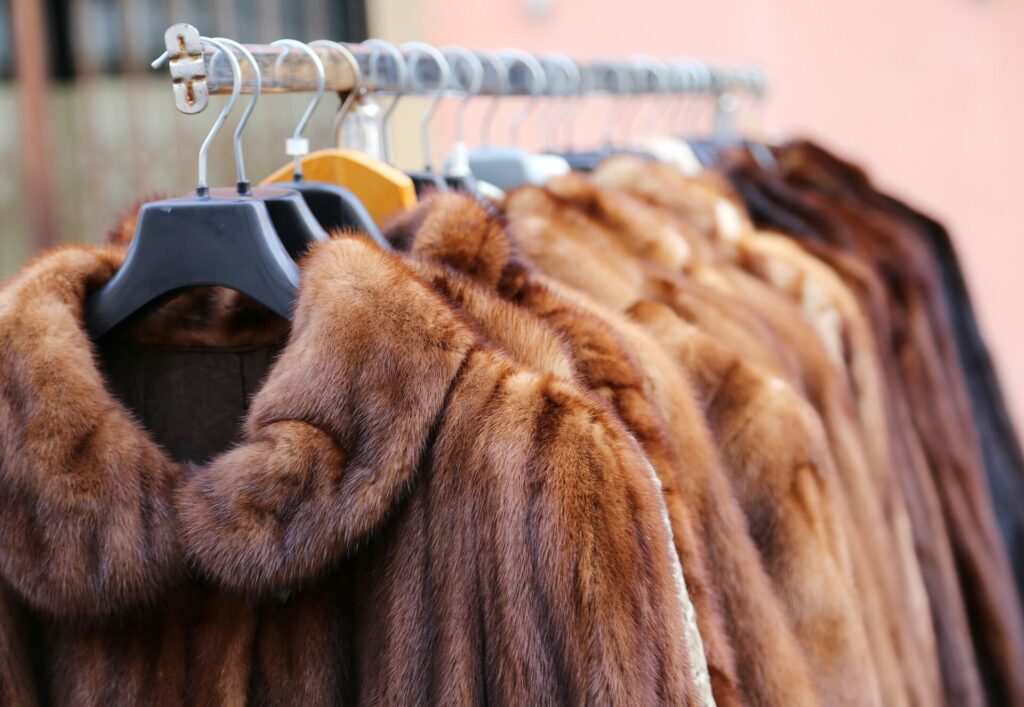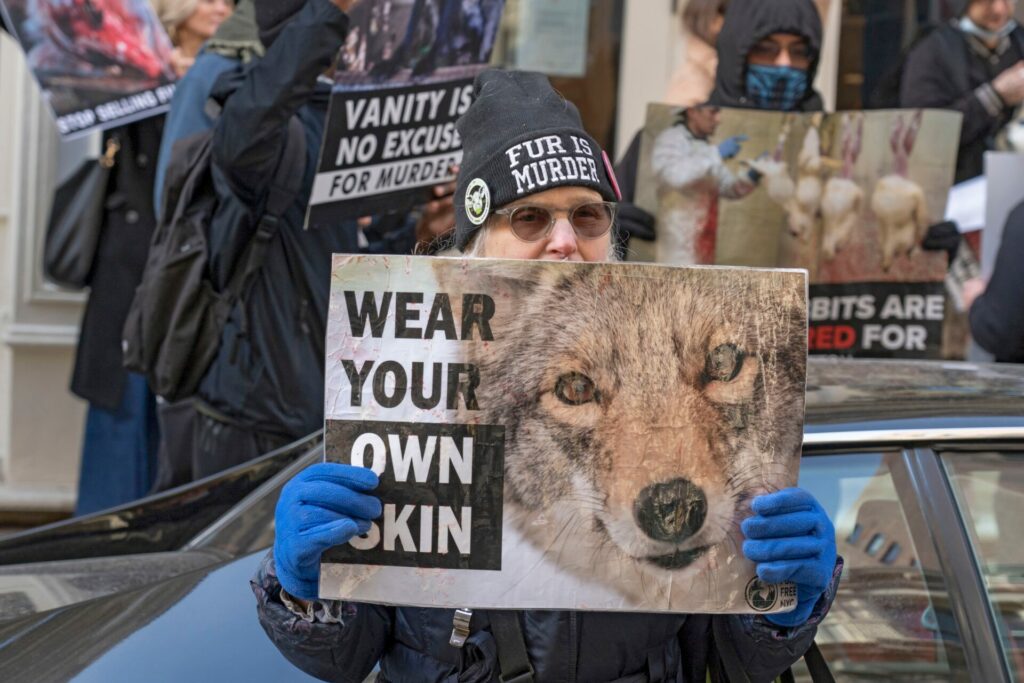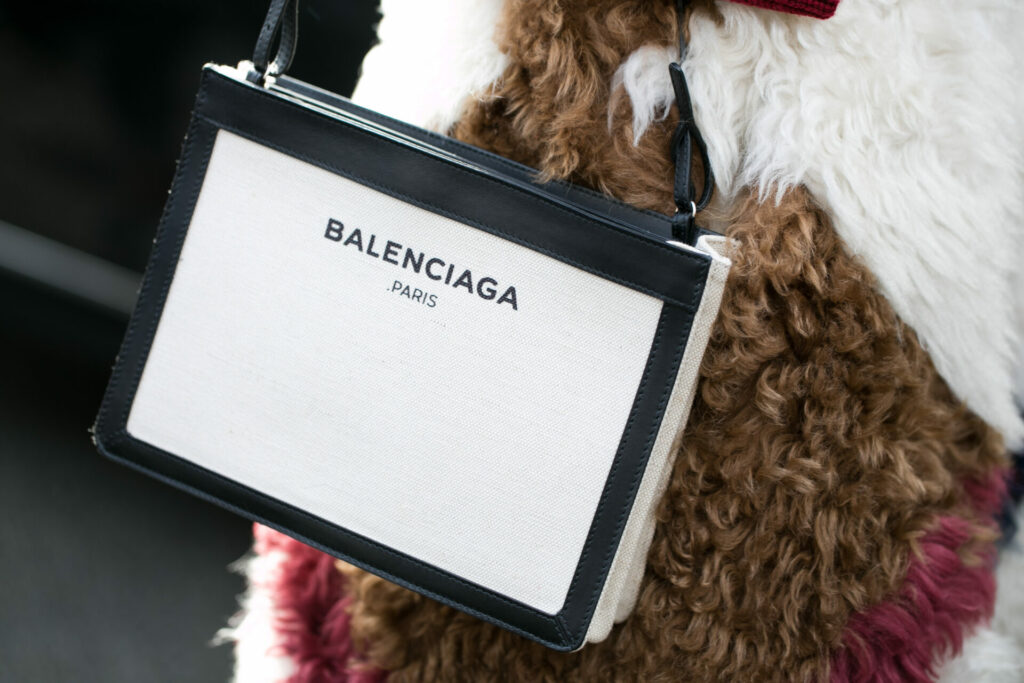You may well have already concluded that fur isn’t something you’ll wear, perhaps if only for animal cruelty factors. Or maybe you’re one of those outliers who still thinks wearing fur is acceptable. But now, after six years of studying and considering the claims made in annual reports, documents and speeches produced by the fur industry, philosophers Andrew Linzey and Clair Linzey, of the UK’s Oxford Centre for Animal Ethics, have produced ‘An Ethical Critique of Fur Factory Farming’. It’s what looks set to be considered a cool, calm and definitive rebuttal of arguments put by the industry in defence of its practices. Certainly, those who do wear fur should steel themselves.
‘We want to address legislators, the fur industry and those consumers who sustain it by still buying fur,’ says Clair Linzey. ‘The fact is that fur isn’t something we think about several times a day in the way we might about, say, our dietary practices [in relation to animals]. But it needs more thought – this is the first time a study has examined the moral justifications for fur. And it finds them wanting. We’ve actually been surprised by just how bad the fur industry’s arguments are.’
So what arguments have been frequently offered by the fur industry for justifying the suffering of animals? And what is Linzey’s riposte?
Historic activities that have claimed to be ‘natural’ also include slavery, racism and the subordination of women. That an activity has a heritage isn’t a justification for maintaining it today.
Clair Linzey, Oxford Centre for Animal Ethics
The industry has argued that its trade is based in the human-nature relationship of time immemorial. But, as Linzey points out, historic activities that have claimed to be ‘natural’ also include slavery, racism and the subordination of women. That an activity has a heritage isn’t a justification for maintaining it today. Likewise it’s not a justification for maintaining every kind of farming either.

Pro-Animal
The the industry speaks, for example, of being ‘pro-animal use’, but, Clair notes, not all uses of animals is morally licit – each has to be evaluated on its merits. ‘People often assume the animals [bred and killed for their fur, including mink, racoon and fox, with factories constituting 85 per cent of the entire fur supply] have quite a nice life and their fur is a by-product. But the fact is that they have a pretty grim existence,’ says Clair Linzey. Aside from the inhumane means of killing of some 60 million animals for their fur, she cites the animals’ close confinement and lack of stimulation, particularly problematic given that they’re non-domesticated and often solitary in the wild. Cue what are known as ‘stereotypies’ – abnormal behaviours including psychological stress, self-injury, fur chewing and so on.
The fur industry argues that it’s a major employer – but then so, Linzey says, is prostitution and organ trafficking; or that banning fur denies people freedom of choice – but then nearly all legislation imposes limits on freedoms: the ‘freedom’ of burglars to burgle, for example
Creates Jobs
The fur industry argues that it’s a major employer – but then so, Linzey says, is prostitution and organ trafficking; or that banning fur denies people freedom of choice – but then nearly all legislation imposes limits on freedoms: the ‘freedom’ of burglars to burgle, for example. The industry broadly attempts to argue that what it does has benefits – to humans at least. But as Linzey stresses, the matter is whether those benefits are justifiable. Are the gains ‘ill-gotten’ ones?
Other arguments that the fur industry has offered appear even more spurious: that mink and fox are domesticated animals, even though they have been bred in captivity for fewer than 60 generations; and if they are domesticated, doesn’t that then demand welfare standards equivalent to that given to our cats or dogs at home?
The industry’s strongest argument is that fur is ‘sustainable’, in that it lasts over time. But, again, that alone doesn’t make fur morally justifiable – plastics too, are ‘sustainable’ by the same measure.
Freedom of Choice
It has argued that creative people should be free to use whatever materials they choose. But, as Linzey points out, there must be limits to this: logically that allows the grotesque use of non-animal – human – materials too. It’s also argued that the objection to fur factory farming is a western sentiment – though Chinese philosophy, notably Confucianism and Daoism, likewise puts humans and non-human animals on the same moral footing.

Environmentally-Friendly
Linzey suggests that perhaps the industry’s strongest argument – or, at least, the one that seems to resonate most at the moment – is that fur is ‘sustainable’, in that it lasts over time. But, again, that alone doesn’t make fur morally justifiable – plastics too, are ‘sustainable’ by the same measure.
It claims real fur is better given the environmental impact of faux-fur – but, Linzey stresses, this isn’t an either/or debate. We don’t have to wear either. Furthermore, the fur industry actually has a negative impact on the environment and its workers – through its chemical use, tanning and preservation processes, water pollution and its being a hotbed of zoonotic disease transmission for the likes of Swine Flu and Sars. Denmark’s fur industry was effectively closed – and it millions of mink culled – to help combat the spread of Covid.

Turning the Fur Tide
Perhaps the weakness of the fur industry’s arguments even hints at desperation, an awareness that the tide is turning. Multiple national, regional and city authorities around the world including Austria, Croatia, the UK and Italy have legislated over the last decade to make fur farming illegal, or like Switzerland, impossible to pursue economically. In 2021 Israel went so far as to become the first nation to outright ban the sale of fur.
Major fashion brands have ceased using fur too – the luxury goods group Kering who owns brands including Gucci, Saint Laurent, Bottega Veneta and Balenciaga went fur free in 2021 too – the resulting reduction in social acceptability helping to diminish the idea of fur as a luxury item. Small wonder, given the fragility of such arguments, that the fur industry is inclined to pull up the drawbridge and avoid engaging in debate or addressing scientific evidence, Linzey argues.

‘I think the industry is finding itself under immense pressure to start justifying itself. But I’m not sure it has thought through its arguments,’ she suggests – she also notes the dubious value of the industry’s vague, propagandistic, self-regulated certification programmes, the likes of Welfur and Furmark. ‘What it boils down to is the question of necessity – is killing an animal morally necessary, even if it’s not necessarily a good thing to do? [On this basis] every aspect of fur factory farming is problematic, so it makes it hard to discern how it could possibly change to make it morally acceptable.’
‘But the fact is that with animals we’re generally in a moral mess. We have close relationships with animals, yet we also eat them – there’s a great tension there.
Clair Linzey, Oxford Centre for Animal Ethics
It’s by this question of necessity that Linzey addresses whether the killing of animals for their meat has greater acceptability than doing so for their fur. Some of our relationships with animals are, she says, ‘symbiotic’ – we care for animals in exchange for their milk, for example. The sustenance provided by meat might still be argued as necessary in the way that the warmth of fur – given many alternatives – cannot. But she concedes that the growing number of alternatives to meat and dairy products might, in time, more firmly prompt similar ethical decisions, especially given the increasing number and sophistication of scientific investigations revealing the complexity of animal cognition and awareness.
‘Wearing fur and eating animals are separate moral choices,’ Linzey argues. ‘But the fact is that with animals we’re generally in a moral mess. We have close relationships with animals, yet we also eat them – there’s a great tension there. We’re seeing progressive thinking with all sorts of ‘isms’ – racism, sexism and so on – yet animals just don’t raise the same kind of challenge in most of our lives yet. But that doesn’t mean we can’t start by making good moral decisions now, and [ditching] fur is a good place to start.’
And it is a start. Indeed, while – given the rate of legislation in recent times around the world, and the growing salience of the ‘animal vote’ in many countries – it would be tempting to see fur as decidedly on its way out, Linzey is not so sure. ‘The progress being made is very good but it’s escaping not just leading producers [the likes of Denmark, Finland and Poland], but also Russia, China, Canada and the US, which make for a huge part of the global fur economy,’ she says. ‘So there is still some way to go yet.’









